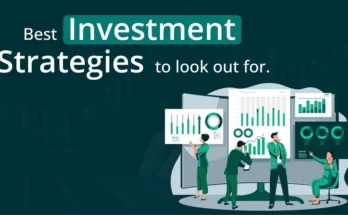Indeed, investing decisions cannot be made today without a deep analysis of all the parameters involved in the fast growing financial environment. There are high eligibility criteria for it – a thorough knowledge of markets, a solid analytical foundation and an understanding of how numbers can be used to generate profit. This is where the Chartered Financial Analyst (CFA) designation adds value to the equation by providing the financial profession with a competitive ‘talking point’ in strategic planning. For the CFA lens keen analysts are enabled to institute well researched decisions that can endure the fluctuations of the market as well as get the overall value.
The CFA Program: Writing a Blueprint for Strategic Thinking
Essentially, the CFA program is intended to equip individuals with a repertoire of tools through which they make sound investment decisions on the financial markets. The curriculum also provides students with a coverage of areas that include portfolio, investment analysis, ethics, risk, and financial reporting. CFA aspirants earn a broad and comprehensive knowledge about financial markets through three isl and challenging levels of the CFA exam.
It is primarily a structured programe that focuses on a strict direct approach to financial analysis, which sets the Chartered Financial Analyst apart. The charter holders of CFA are educated on how to make investment analyses with recourse to, among other things, economic indicators, company fundamentals, and market psychology and sentiment. It is a great source of essential perspective someone would want to have in order to make long term decisions and not be short term oriented.
Making Strategic Decisions: The CFA Way
Much of this decision-making entails strategic planning about multiple variables, forecasting potential outcomes, and minimizing risks, all things that CFAs have honed in their training. CFA presents the integration of quantitative with qualitative analysis that contributes towards holistic decision-making. Let us analyze how CFAs do this:
Fundamental Analysis:
All strategic decisions are based on the deep understanding of the intrinsic value of a certain asset. Fundamental analysis is essential to CFAs, which leverage fundamental financial data to assess the health of companies and the larger economic environment. By analyzing financial statements, trends within other industries, and economic indicators, they can determine how various aspects will play out over the longer term with respect to an investment. The analytical rigor their training provides enables CFAs to find opportunities, some more obvious than others that are a great long-term play.
Risk Management:
There is nothing as an investment without risk and strategic decisions are never made in a vacuum. Risk management is another important core competency referred to by a CFA program. Analysts are educated in evaluating systematic and unsystematic risk then devising tactics that maximize the reductions of potential losses while acquiring all possible returns. CFAs know the best way to spread risk and return across a portfolio which protects clients and their investments when times are tough, either through diversification, hedging or asset allocation.
Portfolio management:
One key area that has to be emphasized is making a balanced portfolio that reflects a client’s goals or risk levels. Therefore, portfolio attributes are quite integrated and include the asset class mix, correlation, and diversification properly. They are equipped with skills of having a go-getter approach in achieving performance in portfolio construction while containing the inherent risks. Owing to their abilities through a combination of active and passive strategies, CFAs can construct a portfolio that responds to different market situations thus enhancing returns over the long term.
Behavioral finance:
Other than the fundamentals, behavioral finance is also another important component of the CFA’s strategic toolkit. At the core of behavioral finance is investor behavior, which spearheads the emotions and sentiment of the market, equipping CFAs with strength in predicting the possible market aftermath results to any news or events. They appreciate the fact that markets can behave in a sentiment-driven manner as a result of fear and greed, and this helps them be able to forecast better and help clients in such circumstances that possess market noise.
Action and Impact on Reality: The CFA Lens
What does this strategic approach look like in real life? Imagine an institutional investor that would want to diversify its holdings across global equities, fixed income, and alternative investments. What a CFA would be looking at was not just the potential return from each asset class but geopolitical risks, interest-rate trends, and currency fluctuations to impact performance. They would develop an investment portfolio that balances risk across regions and sectors hence keeping the portfolio resilient under varying market conditions.
Such an individual investor, therefore, would be recommended for retirement planning by analyzing the current situation of the client, what his or her future cash flow needs would be, and even what his or her tolerance for risk would be. By customizing a portfolio to fit the long-term goals of the investor, be it steady growth or merely preservation of capital, the CFA optimizes and manages risks that include market downturns or inflation.
Conclusion: Analyst’s Edge
While the CFA charter may bring to the financial professional technical knowledge, it also ignites proper mindset regarding strategic and data-driven decision-making. In light of the CFA, analysts enter the financial markets with discipline and rigor, using their utmost ability to acclimate to shifting circumstances. Whether it’s risk management, investment selection, or forecasted economic trends, the CFAs will be positively armed to tackle the details of modern finance in order to make long-term value-driven decisions.
In an increasingly integrated and unpredictable financial world, the CFA charter holder is free to think critically, parse data in profound detail, and chart strategic directions-all of which form a definite advantage. Not only do they take pride in numbers but look into the grand scheme of things while charting strategies that will guide them to financial success-today, tomorrow, and beyond.



